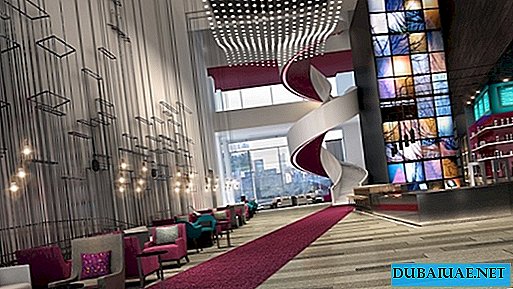Princess selection and the birth of a free city
 Around 600 BC several Greek mariners left Fochea and landed on the wild shores of Lacidone, deciding to create a new colony there. Their leader, Protis, went to find out about the tribes that lived by the sea. The Ligurian tribe has always been friendly to foreigners. Neptune made it so that the Greeks sailed that day when Giptis, daughter of King Nanno, had to choose a future spouse. According to tradition, at the end of the voluptuous dance, the Ligurian princess was supposed to lay the goblet at the feet of the one who would marry her. And the choice fell on the handsome Greek - adventurer Protis, brought to these parts by the sea. So Marseilles emerged (in those days - Massaliah). Before becoming a city dedicated to Our Lady of the Keeper, Marcel lived for the glory of another goddess - Artemis, unbridled and proud. Thus, Marseille became the first city in the territory, which was not yet called France and was a Phoenician colony; it was described by Greek historians long before the rise of Luptenius.
Around 600 BC several Greek mariners left Fochea and landed on the wild shores of Lacidone, deciding to create a new colony there. Their leader, Protis, went to find out about the tribes that lived by the sea. The Ligurian tribe has always been friendly to foreigners. Neptune made it so that the Greeks sailed that day when Giptis, daughter of King Nanno, had to choose a future spouse. According to tradition, at the end of the voluptuous dance, the Ligurian princess was supposed to lay the goblet at the feet of the one who would marry her. And the choice fell on the handsome Greek - adventurer Protis, brought to these parts by the sea. So Marseilles emerged (in those days - Massaliah). Before becoming a city dedicated to Our Lady of the Keeper, Marcel lived for the glory of another goddess - Artemis, unbridled and proud. Thus, Marseille became the first city in the territory, which was not yet called France and was a Phoenician colony; it was described by Greek historians long before the rise of Luptenius.
If Paris arose from the marshy mists of Ile de la Cité, then Massalia (Marseille) can be called the "eastern door" of the Mediterranean. Probably, it was the access to the sea that made this city turn its back on the great history and political aspirations of various rulers that it claimed. Marcel asserted his independence very soon, and this forever characterized his development and his fame. In 48, Massalia was renamed Marseille, and immediately demonstrated her rebellious character.
It was at this time that Caesar became the master of Rome and the entire Empire. All cities obeyed Caesar, except Marseilles. August Caesar could not come to terms with this. He personally ordered the burning of the dense oak forests of Marseille. But, despite the discord with Caesar and subsequent rulers, Marseille retained its lively spirit of the trade and cultural capital of the region. In the XV century, with the support of King Renate the Good, Marseille flourished and was independent. He was even ahead of Genoa and Venice.
In December 1481, Marseille finally retreated to France. During the French Revolution, Marseille retained its habits and freedom-loving character. True, he gave the Revolution a hymn, and she, in turn, made Marseille speak French and took away part of his privileges.
"French Chicago" and World War II
In the 1930s Marseille was nicknamed "French Chicago", in particular, due to the close ties of some politicians with the ubiquitous punks. One of the acts of the Marseilles criminal world has become a real tragedy. On October 9, 1934, a professional killer took the life of King of Yugoslavia Alexander and Foreign Minister Luis Baritu. In 1939, Marcel became a silent witness to the outbreak of World War II. The city was on neutral territory until November 1942, and many famous people fled here trying to hide from the Nazis. The list is long: Max Ernst, Walter Benjamin, Andre Breton, Rene Ball, Andre Mason, Victor Brons ...
At the end of January 1943, by personal order of Hitler, the Germans demolished most of the old quarters of Marseille and, in particular, the famous quarter of Saint-Jean, between the port and Pannier. On May 27, 1944, Anglo-American troops dropped bombs on the city! After 10 minutes, 1000 buildings were completely destroyed and 2000 partially. Marcel was released after prolonged fighting on August 21-24, 1944. So to say, “released”, since most of Marseille’s history ended on the day the Nazis destroyed the Saint-Jean quarter. The circle is closed. As if its roots had disappeared, to give the city the opportunity to start a new story. But in the 1970s. much of the past is being reborn, and today Marseille is one of the most beautiful cities in Europe. Thanks to its 2,600-year history, it is recognized as the cultural capital of the European continent.
Ports, Fortresses and Castles
 Getting acquainted with Marseille, we visited the old port. The entrance to the old port is guarded by two impressive fortresses: Saint-Jean and St. Nicholas - observers placed by order of Louis XIV, who was spying on the unshakable Marseille. Its moorings, where trading and military frigates and ships used to moor, today are met only by small fishing boats and pleasure boats, many of which have not been anchored for a long time.
Getting acquainted with Marseille, we visited the old port. The entrance to the old port is guarded by two impressive fortresses: Saint-Jean and St. Nicholas - observers placed by order of Louis XIV, who was spying on the unshakable Marseille. Its moorings, where trading and military frigates and ships used to moor, today are met only by small fishing boats and pleasure boats, many of which have not been anchored for a long time.
On the banks of Lacidon is one of the most beautiful buildings - the Municipality, built of pink stone of Couronne. It is striking thanks to the extraordinary light that fills the old port almost all day.
From the hill of Saint-Lauren on Republic Street, the cradle of Marseille is clearly visible, from where you can admire the famous Pannier on the Moulin hill (the source of ancient Marseilles), whose dubious fame is added to the fame of the "Secret Quarter", where all brothels were closed during the times of refined morals. It is known that Saint-Jean was known as a quarter of seduction, and Pannier was intended, as it were, for “gentlemen”, today we would say for “godfathers”. The legendary quarter of Marcel Pannier, home to a unique mixture of fishermen, sailors and criminals, in the 1970s. became an immigration center. On the Panye Hill stands the Old Shelter of Mercy, from the early 1980s. - Cultural Center.
Going down to the sea, we meet the Cathedral de la Major on the way. Its size is impressive. This monumental building in the Byzantine style, richly decorated with various materials. Here is the Kalissin stone, and the stone from the Guard, and the Florentine green Carrara marble, and the Italian onyx, and the Venetian mosaic.
The culture of Marseilles is, first of all, two temples of song and spectacle. One of them is the Opera House. Opera lyrics are culturally preferred by residents. It is so appreciated that all walks of life attend the theater. Another cultural monument was Alcazar. This temple of the Marseille operetta in the style of Vicente Scotto was a test step for variety artists, who claimed to be high national stages. The audience of Alcazar loved the songs, and each artist had every opportunity to become an idol. Many have been there: from Maurice Chevalier to Johnny Holliday, Tino Rossi and, of course, Yves Montana.
For the glory of Our Lady of the Keeper
The visiting card of Marseille is the Basilica of Our Lady of the Keeper. The creation of the temple dates back to 1214, when the hermit Peter received permission to build a chapel in a secluded place on Storogiev Hill. In 1218, he erects the chapel of Our Lady of the Keeper. Since then, the chapel has been rebuilt several times. In 1851, St. Eugene de Mazno, Bishop of Marseille, undertook the construction of a new chapel under the guidance of the architect Esperandier (the one built by A Major) in the same Roman-Byzantine style. The Basilica of Our Lady of the Keeper was consecrated on July 4, 1864. The name of the Blessed Virgin Mary was given to her by pilgrims who asked for protection. The inhabitants of Marseille continue to honor her, calling this unofficial, but significant name. June 21, 1931 in the presence of 300 thousand people a crown was laid on the statue. When approaching Marseille, both by water and by land, you can immediately notice it. The huge statue seems to be guarding the city with one glance. The monumental statue of the Blessed Virgin Mary with her baby blesses the city and port, as well as all who come to Marseille. The panorama opening from the hill is one of the most beautiful in France. On the one hand - the sea with the Friuli Islands and If Castle, embankments and the Old Port, on the other - Marseille.
Canals, bays, parks
 Until the 19th century, those who came to Marseille were surprised that there were no monuments in the city. And only under Louis Bonaparte, who was trying to please the port city, blooming palaces and irresistible buildings, wide avenues and a viewing area appeared in Marseille. The palace Faros Louis Bonaparte presented to his wife, Empress Eugenia. The royal couple visited there on the day of the grand opening, and Eugene herself spent several nights in the palace before her death.
Until the 19th century, those who came to Marseille were surprised that there were no monuments in the city. And only under Louis Bonaparte, who was trying to please the port city, blooming palaces and irresistible buildings, wide avenues and a viewing area appeared in Marseille. The palace Faros Louis Bonaparte presented to his wife, Empress Eugenia. The royal couple visited there on the day of the grand opening, and Eugene herself spent several nights in the palace before her death.
Borel Castle, built by a wealthy family of merchants, rises on the hill of a famous park, where people walk, admire roses, ride bicycles and play balls. By the way, the masters of the "ball" come here from all over the world.
Marseille did not always have enough water. For a long time, water was taken from only two rivers: Juve and Jarette, the level of which was unstable. It used to be that the water in the city turned out to be more valuable than silk. Lonschmann Palace (1862-1869) - a real hymn to water, in all its splendor worthy of Versailles, it became a real holiday, erected on the occasion of the approach to the coastal city of the Monrite canal or the Marseille canal, which sent the Durance water from Petrius to Vohluz. Its central fountain represents Durance, surrounded by vineyards and fields. The lateral premises of the palace housed museums of natural history and art.
In June 2001, on the 2600th anniversary of Marseille, the park of the XXVI century was laid out. Near the entrance to the park, a Tree of Hope is planted, at the foot of which the names of the inhabitants of Marseille, both known and unknown, are inscribed.
From the Catalan bay, a 5-km-long promenade stretches - a great place for walking. First, it crosses the fishing ports (the observation deck named after D.F. Kennedy), then goes to the beaches and the coastal park of Prado, turns to the port of Pointe Ruchi and ends near country houses and bays.
Having a country house for the Marseilles is a tradition that dates back to the time when the garden was needed. These dry masonry houses used to be huts, which gradually turned into suburban dachas of not very wealthy families in the vicinity of Marseille.
More prestigious houses were erected near the sea, near Redonn or behind the coastal park Prado in Kalanka. Kalank immerses his crimson steep cliffs of limestone in the unprecedented blue of the Mediterranean Sea. One of the highest in Europe, these peaks are a paradise for climbers.
The bays between Marseille and Ciotat divide the coast into a large number of bays - a joy for owners of pleasure yachts and lovers of scuba diving. It was under one of them, Sormiu, in 1991 at a depth of 37 m above sea level that Henri Koske found the cave, which today bears his name. Its walls are covered with rock paintings depicting the cult of shamanism of hunters of the Paleolithic Era (25,000 - 16,000 years ago). During the ice age, the cave was on land, and was easily accessible.
An interesting story is the castle of If. In 1524, by order of Francis I, a fortress was built here to protect the city from attacks from the sea. Since 1634, the castle became a state prison, where many celebrities were held in custody. The most famous of them is Edmond Dantes, a fictional character in the novel by Alexander Dumas "Count of Monte Cristo." Later, fantasy turned into reality, and now visitors can look into the camera of Dantes, which in 1926 became a historical monument.
About soap bubbles and Provence cuisine
Already in the XVIII centuries. Marcel became the king of soap bubbles. In 1789 there were 33 workshops, which produced 70 thousand tons of soap, diverging throughout France and abroad. Trade flourished, ships plowed the seas, and Marseille became a center for processing tropical oilseeds: peanuts, copra, palm seeds and sesame seeds. The recipes were very strict, but each master had his own secrets for making the “best” soap, if not the “best” soap: 63% copra or palm oil, 23% water, 9% soda and sea salt.
Before you start talking about the kitchen, you need to get acquainted with one unconditional rule. In Marseille, as in all of Provence, everyone is fried and cooked only in olive oil, and no one dares to object, because the fact that it prevents cardiovascular diseases has been known for a long time. Olive oil does not change its properties even when heated to 210 ° C.
A real Marseille man does not start dinner without an aperitif, hence his classic image: here he sits in the shade of a fig tree, in a loose shirt with an open collar and, under the crackle of grasshoppers, pulls up his "pastis". Aperitifs are seized with traditional snacks that were the kings of tables long before the advent of more practical salted nuts.
Only in a calm atmosphere and under the Provencal aperitif can you try a traditional dish of snails. Small whitish snails are planted on the stalks of fennel and boiled in broth from water, salt, fennel and garlic. Another appetizer - washed sprats are marinated in olive oil with garlic and Provencal herbs and served on slices of tortilla. The gastronomic attraction of the Marseilles is considered to be "Bouillabaisse" - Provencal fish soup, which is prepared from three varieties of fish: ruff, trigger and sea eel. The fish is dipped in a golden broth seasoned with pepper, onion, garlic, bay leaf, sage, fennel and tomatoes. To make the dish more savory, “ruy” - red sauce with Spanish pepper is served to the bouillabaisse.
For a long time, on the bare hills of Nert, between Estac and Martigues, I make Brusdu-Row cheese. Traditional Provencal fresh cheese made from goat or sheep’s milk has become a favorite dessert of the people of Marseille. For a snack, the Marseilles treat guests with crispy boat-shaped cookies with an orange aroma.
Kiki-freschi - wave-shaped fritters fried in oil and rolled in sugar - a typical dish in the Estac region, where they are prepared on Sundays for residents and guests of Marseille.
Pictures - frozen and revived
And a little about the art of painting and cinema. Estac is a small fishing port at the exit of Marseille. At the beginning of the twentieth century, some artists fell in love with him, and came there to sketch for paintings that perpetuated Estacus. Marriage, Cezanne, Derain and Duffy dipped their hands in the waters of this small bay. Now their works are exhibited in famous museums and prestigious private collections. Stillness of paintings gives way only to the movement of the cinema. In 1998, Estack appeared in the film Marius and Jeanette. This film conquered the whole world and achieved unexpected success. The world admires the glorious Marseille writers - Victor Jellot, Marcel Pagnol, Edmond Rostand, Jean Buller; masters of musical comedy - composer Vincent Scotto, Dirius Milo, actors Fernand Joseph Desiree Contanden, nicknamed Fernandel; athletes - Jean Buin, Gaston Rebuffa, Zinedine Zidane. And if Marseille used to be the "trading king" of the seas and oceans, now he is a "sports king".
Marseille and the sea - an inseparable duet
Leaving Marseille, we once again admire the breathtaking panorama, picturesque nature, soft waves of the Mediterranean Sea. Marseille is an example of cultural and historical symbiosis that originated in ancient times and delights everyone who visited it.










